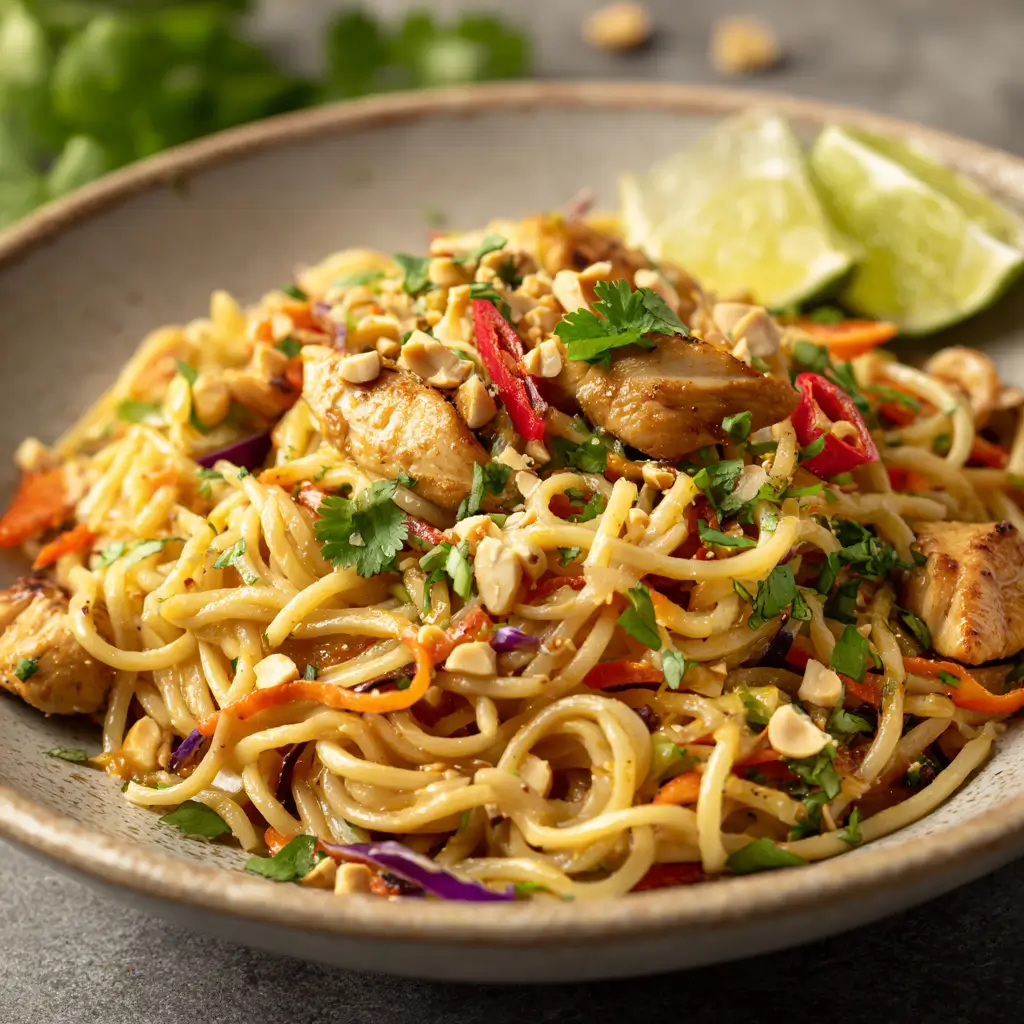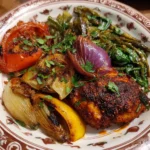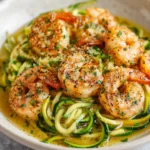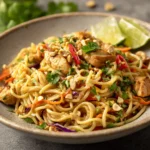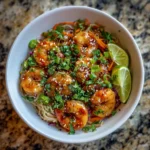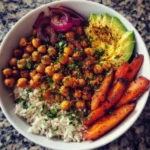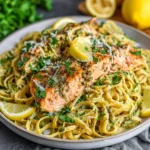Thai Peanut Noodles with Chicken: A Flavorful Fusion of Creamy, Spicy, and Savory Delights
Indulge in the vibrant flavors of Southeast Asia with this mouthwatering Thai Peanut Noodles with Chicken recipe. A beloved staple in Thai cuisine, this dish combines tender chicken, chewy noodles, and a rich, creamy peanut sauce that’s perfectly balanced with sweet, tangy, and spicy notes. Whether you’re craving a quick weeknight dinner or looking to impress guests with an exotic yet approachable meal, this recipe delivers bold taste, satisfying textures, and a healthy dose of comfort. From its historical roots to modern-day variations, discover everything there is to know about this culinary favorite — including detailed instructions, ingredient insights, and expert tips to make your version truly exceptional.
The History of Thai Peanut Noodles
While peanut-based sauces have long been a part of Asian culinary traditions, Thai Peanut Noodles as we know them today are a relatively modern fusion creation. Peanuts were introduced to Southeast Asia by Portuguese traders in the 16th century and gradually became integrated into local cuisines. In Thailand, peanuts found their way into satay sauces, spicy salads, and dipping condiments. Over time, street vendors in Bangkok and Chiang Mai began incorporating peanut sauces into noodle dishes, combining them with stir-fried vegetables and proteins like chicken or tofu.
The global popularity of Thai Peanut Noodles surged in the late 20th century, particularly in Western countries, where Thai restaurants adapted traditional recipes for local palates. The dish evolved into a harmonious blend of Thai spices, Chinese-style stir-frying techniques, and Western preferences for hearty, saucy meals. Today, it stands as a symbol of Thai fusion cuisine — not strictly traditional, but deeply inspired by authentic flavors and cooking methods. Its versatility and crowd-pleasing taste have cemented its place on menus around the world and in home kitchens alike.
Ingredients Breakdown: What Makes This Dish Shine
The magic of Thai Peanut Noodles with Chicken lies in the balance and quality of its ingredients. Each component plays a crucial role in building layers of flavor, texture, and aroma. Let’s take a closer look at what goes into this delicious dish:
- Chicken Breast or Thighs: Boneless, skinless chicken is ideal for quick cooking and easy slicing. Thighs offer more moisture and richness, while breasts provide a leaner option.
- Rice Noodles: Flat rice noodles (like pad thai noodles) are gluten-free and absorb sauces beautifully without becoming mushy. Alternatives include soba, udon, or even whole wheat spaghetti.
- Peanut Butter: Use natural, unsweetened peanut butter for the best flavor and creaminess. Avoid brands with added hydrogenated oils or excessive sugar.
- Coconut Milk: Full-fat coconut milk adds luxurious richness and helps emulsify the sauce. Light coconut milk can be used for a lower-calorie version.
- Fresh Aromatics: Garlic, ginger, and green onions form the aromatic base, enhancing depth and freshness.
- Soy Sauce or Tamari: Provides umami and saltiness. Tamari is a gluten-free alternative with a slightly smoother taste.
- Lime Juice: Freshly squeezed lime juice brightens the dish and cuts through the richness of the peanut sauce.
- Maple Syrup or Brown Sugar: Adds a touch of sweetness to balance the heat and acidity. Honey works well too, though not vegan.
- Sriracha or Chili Garlic Sauce: For that signature kick. Adjust quantity based on your spice tolerance.
- Vegetables: Bell peppers, carrots, broccoli, snap peas, and cabbage add color, crunch, and nutrition.
- Garnishes: Chopped peanuts, cilantro, lime wedges, red pepper flakes, and sesame seeds elevate both presentation and flavor.
Step-by-Step Recipe: How to Make Thai Peanut Noodles with Chicken
Follow these detailed steps to create a restaurant-quality Thai Peanut Noodles with Chicken dish right in your own kitchen.
Ingredients
- 8 oz (about 225g) flat rice noodles
- 1 lb (450g) boneless, skinless chicken breasts or thighs, thinly sliced
- 2 tbsp vegetable oil (or sesame oil for extra flavor)
- 3 cloves garlic, minced
- 1 tbsp fresh ginger, grated
- 1 red bell pepper, julienned
- 1 cup shredded carrots
- 1 cup broccoli florets
- 1/2 cup snap peas
- 4 green onions, sliced (whites and greens separated)
Peanut Sauce
- 1/2 cup natural creamy peanut butter
- 1/3 cup full-fat coconut milk
- 3 tbsp soy sauce (or tamari)
- 2 tbsp lime juice (about 1 lime)
- 1 tbsp maple syrup or brown sugar
- 1–2 tsp sriracha (adjust to taste)
- 1 clove garlic, minced
- 1 tsp grated fresh ginger
- 2–4 tbsp warm water (to thin sauce)
Garnishes
- 1/4 cup chopped roasted peanuts
- 1/4 cup fresh cilantro leaves
- Lime wedges
- Red pepper flakes (optional)
- Toasted sesame seeds
Directions
- Prepare the Noodles: Soak rice noodles in hot water according to package instructions (usually 6–8 minutes). Drain, rinse with cold water, and set aside. If using pre-cooked noodles, simply warm them before adding to the stir-fry.
- Make the Peanut Sauce: In a medium bowl, whisk together peanut butter, coconut milk, soy sauce, lime juice, maple syrup, sriracha, garlic, and ginger until smooth. Add warm water one tablespoon at a time until the sauce reaches a pourable consistency. Set aside.
- Cook the Chicken: Heat 1 tbsp oil in a large skillet or wok over medium-high heat. Add chicken slices and cook for 5–6 minutes until golden and cooked through. Remove and set aside.
- Stir-Fry the Vegetables: In the same pan, add remaining oil. Sauté garlic, ginger, and white parts of green onions for 30 seconds until fragrant. Add bell pepper, carrots, broccoli, and snap peas. Stir-fry for 4–5 minutes until crisp-tender. Add green onion tops during the last minute.
- Combine Everything: Return the cooked chicken to the pan. Add drained noodles and about 3/4 of the peanut sauce. Toss gently to coat everything evenly. Cook for another 1–2 minutes to heat through.
- Adjust and Serve: Taste and add more sauce, lime juice, or sriracha as needed. Transfer to serving plates or a large bowl.
- Garnish Generously: Top with chopped peanuts, cilantro, sesame seeds, red pepper flakes, and serve with lime wedges on the side.
Tips for Perfect Thai Peanut Noodles Every Time
- Don’t Overcook the Noodles: Rice noodles become gummy if soaked too long. Check them frequently and rinse with cold water immediately after soaking to stop the cooking process.
- Bloom the Aromatics: Sautéing garlic and ginger before adding vegetables enhances their flavor and prevents bitterness.
- Use Warm Sauce: If the peanut sauce thickens too much, warm it slightly or add more coconut milk/water to maintain a silky texture.
- Prep Ahead: Chop all ingredients and make the sauce in advance. This dish comes together quickly, so having everything ready ensures a smooth cooking process.
- Balance the Flavors: Always taste before serving. The perfect Thai peanut sauce should be creamy, slightly sweet, tangy, salty, and spicy — adjust accordingly.
- High Heat is Key: Stir-frying over high heat gives vegetables a nice sear while keeping them crisp. Don’t overcrowd the pan; work in batches if necessary.
- Customize Protein Easily: Swap chicken for shrimp, beef, tofu, or tempeh depending on dietary preferences.
Variations and Customizations
This recipe is incredibly versatile and welcomes creative twists. Here are some popular variations to suit different tastes and dietary needs:
- Vegan Thai Peanut Noodles: Omit chicken or use tofu/tofu skin. Ensure peanut butter and soy sauce are vegan-friendly.
- Gluten-Free Option: Use tamari instead of soy sauce and verify that your peanut butter doesn’t contain gluten additives.
- Low-Carb/Keto Version: Replace noodles with spiralized zucchini (zoodles), shirataki noodles, or cabbage strips. Use a low-sugar sweetener like monk fruit syrup.
- Spicier Kick: Add sliced fresh Thai chilies, extra sriracha, or a dash of chili oil for heat lovers.
- Nut-Free Alternative: Substitute peanut butter with sunflower seed butter or tahini (sesame paste), adjusting liquid as needed.
- Dessert-Inspired Twist: Add banana slices and a sprinkle of cinnamon for a Thai-inspired sweet version (great for adventurous eaters).
- Meal Prep Friendly: Assemble components separately and store in airtight containers. Combine and reheat when ready to eat.
- Grain Bowl Style: Serve over jasmine rice, quinoa, or cauliflower rice for a heartier base.
Health Considerations and Nutritional Value
Thai Peanut Noodles with Chicken can be a nutritious and well-balanced meal when prepared with mindful ingredient choices. Here’s a breakdown of its health aspects:
- Protein Powerhouse: Chicken provides lean protein essential for muscle repair and satiety. One serving offers approximately 25–30g of protein.
- Healthy Fats: Peanut butter and coconut milk contain monounsaturated and medium-chain triglycerides (MCTs), which support heart health and energy metabolism.
- Fiber-Rich Vegetables: Carrots, broccoli, and bell peppers contribute fiber, vitamins A and C, and antioxidants that support immune function and digestion.
- Low in Added Sugar: By using natural sweeteners like maple syrup in moderation, this dish avoids refined sugars commonly found in takeout versions.
- Calorie Control: A typical serving ranges from 450–600 calories, depending on portion size and ingredients. Using light coconut milk and reducing oil can lower the count.
- Allergen Awareness: Peanuts are a common allergen. Always label dishes clearly if serving others. Cross-contamination should be avoided in sensitive environments.
- Sodium Content: Soy sauce contributes sodium, so consider reduced-sodium versions or coconut aminos for a healthier alternative.
- Portion Management: While satisfying, the creamy sauce can be calorie-dense. Measuring peanut butter and coconut milk helps maintain balance.
Nutritional Estimate per Serving (approx. 1.5 cups):
- Calories: 520
- Protein: 28g
- Fat: 26g (mostly unsaturated)
- Carbohydrates: 45g
- Fiber: 6g
- Sugars: 10g (natural sources)
- Sodium: 800mg (varies with soy sauce)
Frequently Asked Questions (FAQ)
Can I use almond butter instead of peanut butter?
Yes, almond butter works well as a substitute, though it has a milder, slightly sweeter flavor. Cashew butter is another excellent alternative.
How do I store leftovers?
Store in an airtight container in the refrigerator for up to 4 days. Reheat gently on the stove with a splash of water or coconut milk to revive the sauce.
Can I freeze this dish?
It’s best enjoyed fresh. Freezing may cause the sauce to separate and noodles to become mushy upon thawing.
Why is my sauce too thick?
Add warm water or additional coconut milk one tablespoon at a time until desired consistency is reached.
Is this dish spicy?
The level of spiciness depends on how much sriracha or chili you add. Start with 1 tsp and adjust to taste.
Can I make it ahead of time?
Absolutely! Prepare the sauce, chop veggies, and slice chicken in advance. Assemble and cook just before serving for optimal texture.
What kind of noodles are best?
Rice noodles are traditional and gluten-free. For a chewier bite, try egg noodles or udon. Whole grain options add fiber.
Can I make it in a slow cooker?
Not recommended due to the delicate nature of noodles and risk of overcooking. However, you can slow-cook the chicken and sauce, then combine with freshly cooked noodles.
Summary
Thai Peanut Noodles with Chicken is a vibrant, satisfying dish that blends creamy peanut sauce, tender chicken, and colorful vegetables over perfectly cooked noodles. Packed with flavor, nutrition, and endless customization options, it’s a must-have recipe for any home cook.
